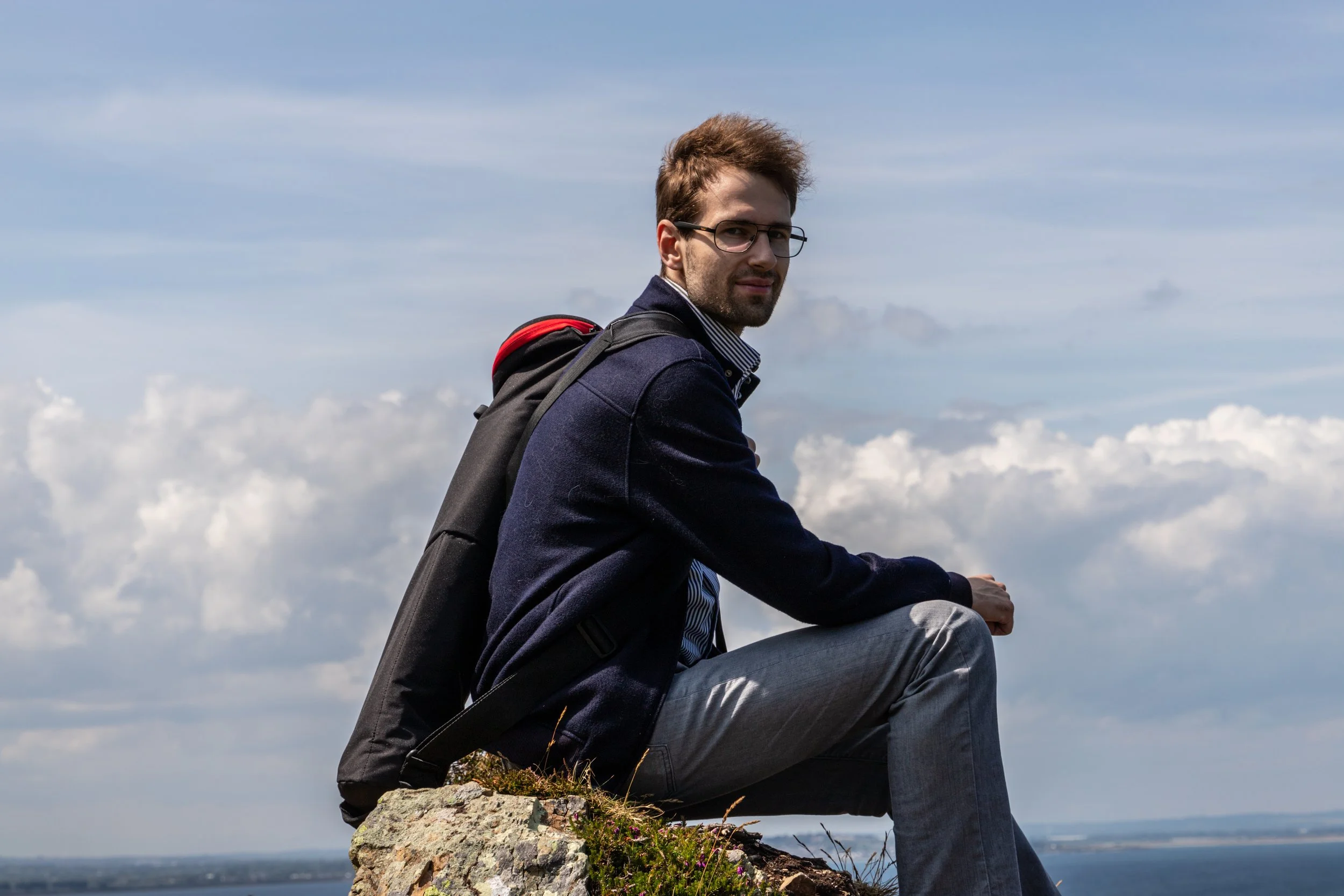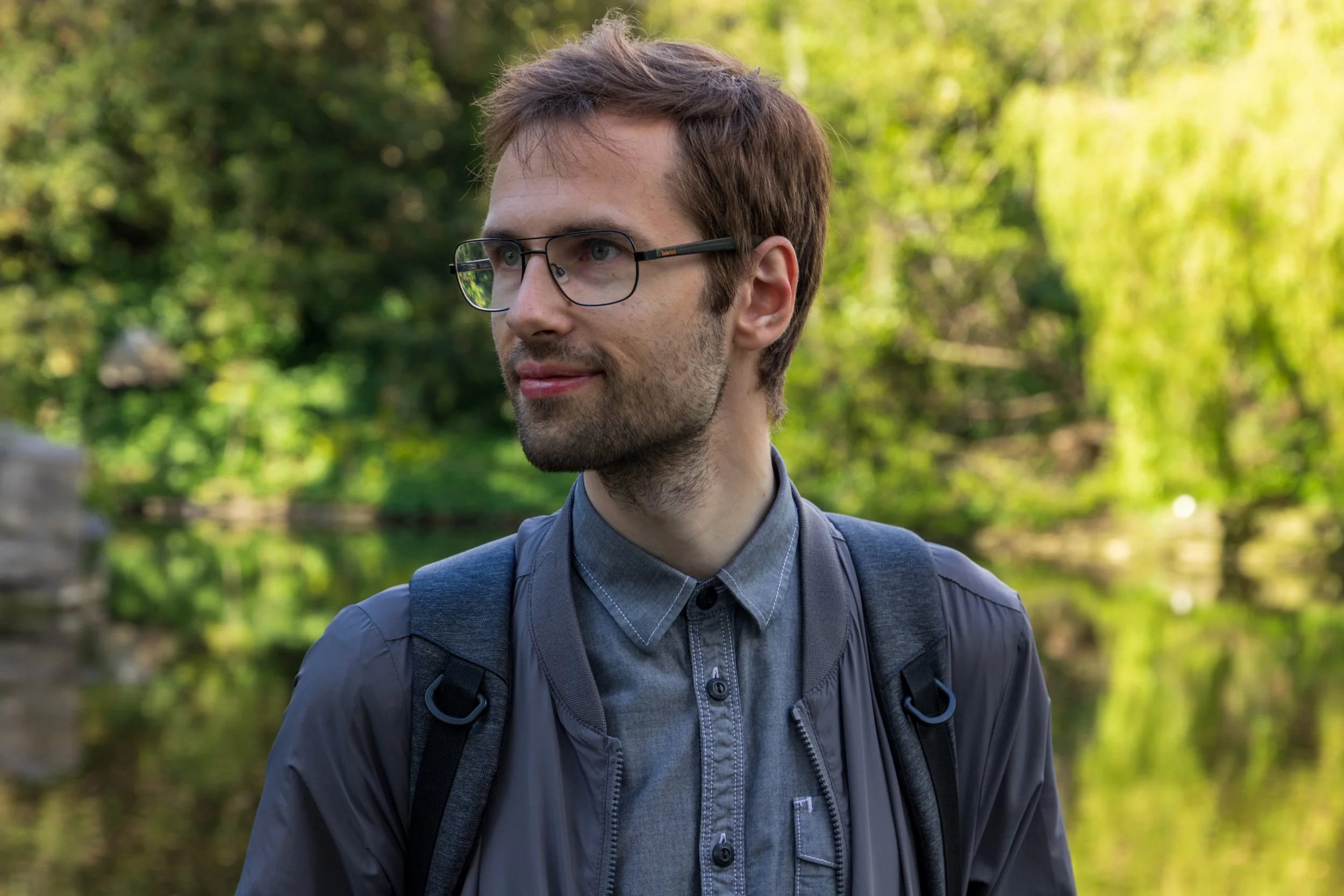I am an Irish molecular biologist with an interest in the fundamental molecular mechanisms that govern human biology. My research to date has focused on the Sestrin family of stress-responsive proteins, examining their roles in cell signalling, motility, and cancer biology. Sestrins are expressed across nearly all tissues and conserved throughout evolution. Their diverse functions and ubiquity served as a strong motivation for my work, as even incremental discoveries in this field may have broad biological and clinical relevance. I now aim to expand the scope of my research from the study of a single gene family to the investigation of wider molecular pathways and mechanisms that define cell biology and human disease.
Education
Trinity College Dublin
B.A. in Biochemistry 2015 - 2019
Final year project: The role of SESN1 and SESN2 in lung cancer under mitochondrial respiratory inhibition
PhD in Biochemistry 2019 - 2024
Thesis title: p53-regulated SESN1 and SESN2 regulate cell proliferation and cell death through control of STAT3
Moscow State University
Internship Summer 2018
Worked on generating A549 knockouts of SESN1&2
Experience and Scientific Philosophy
Independent and self-directed researcher
Strongly self-motivated and disciplined in long-term project execution
Experienced in laboratory management, protocol development, and mentoring
Emphasis on organisation, reproducibility, and clarity of method
As the only full-time researcher in the laboratory besides my principal investigator, I assumed combined responsibilities of researcher, mentor, and laboratory manager. I established and optimised experimental protocols, trained undergraduate and Master’s students, and maintained the laboratory’s daily operation. This experience taught me to view the laboratory as a system with many moving parts, in which organisation and communication directly determine the quality and reliability of research.
My scientific approach is grounded in a detailed understanding of fundamental processes. I prioritise extensive experimental controls and aim to ensure that assumptions about molecular experiments are supported by evidence. I consider persistence and continuity of thought essential in scientific work. Each experiment contributes incrementally toward broader objectives and offers an opportunity to improve precision and reproducibility. I consider troubleshooting, laboratory organisation, and mentoring essential, as a well-structured research environment is fundamental to producing reliable and reproducible results.
My objective is to maintain a lifelong career in academic research. I believe that the growing complexity of biological questions demands long-term commitment and sustained focus. My aim is to build the depth of experience necessary to address problems that may appear unsolvable today.
Technical Skills
Molecular and Cellular Biology
PCR, qPCR (Stratagene Mx3000P system)
CRISPR/Cas9 knockout and shRNA knockdown (lentiviral delivery)
Cloning and fusion construct design (e.g. BioID2-Sestrin2, FLAG-TbSESN)
Mammalian cell culture (HEK293T, A549, H460); stable line generation and maintenance
Lentiviral packaging, transduction, and FACS-based clone selection
Protein and Imaging Work
Western blotting (300+ experiments, quantitative analysis)
Immunoprecipitation, Subcellular fractionation, Proximity Labelling
Light and confocal microscopy (Olympus IX81, Leica SP8)
Image processing and analysis (Fiji/ImageJ, LC3B-mCherry-GFP assay)
Flow Cytometry
BD FACSCanto II, Accuri C6, FACSAria Fusion, LSRFortessa
Apoptosis, viability, and GFP-based sorting assays
Computational and Analytical Tools
Clustal Omega, JalView, PyMOL, GraphPad Prism, Excel (published review with these tools)
RStudio and Linux terminal (basic familiarity)
Adobe Photoshop (figures), MAGIX VEGAS and Audition (video and audio editing)
I have broad, hands-on experience in molecular and cell biology techniques, including CRISPR/shRNA gene manipulation, plasmid cloning, qPCR, and Western blotting. My cell culture work involves the maintenance and manipulation of mammalian cell lines, lentiviral transduction, and the generation of stable knockouts. I routinely use flow cytometry for cell sorting and quantitative assays, and have complementary experience in microscopy-based analyses.
I complement experimental work with computational analysis, employing tools such as JalView and PyMOL for sequence and structural evaluation. I apply open-source bioinformatics tools for sequence alignment, motif analysis, and interpretation of gene expression data. I have a particular interest in the visual communication of science and regularly use Adobe Photoshop and MAGIX Vegas for figure design and video production.
I place strong emphasis on experimental design, control strategy, reproducibility, and iterative optimisation, particularly when adapting protocols or establishing new systems from first principles.
Personal Interests
Hiking and running
Photography
Passion for computer video games
Enjoyment of science fiction and fantasy literature
Outside the laboratory, I find balance and reflection through long walks and running, averaging about ten kilometres of travel a day. Physical activity gives me time to think, reset, and reflect on ongoing work.
In my personal time, I play video games, and I often use them to stay connected with friends and family. I enjoy strategy and role-playing games that focus on systems, design, and problem-solving. I also enjoy reading science fiction and fantasy, which provide a lighter and more imaginative contrast to the structure of scientific work.
I enjoy taking photographs, and I hope this website has showcased some of the places and scenes I have captured.
I believe that sustaining a lifelong research career requires balance and endurance across the physical, intellectual, and emotional aspects of life. I see these activities as essential for maintaining stability and longevity in scientific work.
I spent a month volunteering at an archaeological site, where the structure behind me is believed to be an enclosure surrounding a communal area dating to the Iron Age (approximately 1200-550 BC).






